by Anita Matechuk
As I come to the end of my second post-secondary experience, I am reflecting on the differences between my two learning journeys. I first obtained a degree in engineering in an in-person environment. Then I took my technical communication certificate virtually.
My in-person schooling experience
Okay, here I am really going to date myself, but I took my engineering degree before students had laptops. We had computers, but they were big and bulky, and you didn’t take them to class with you. Instead, university consisted of in-person lectures where you sat with your friends and madly tried to write notes while listening to the professor and responding to questions if asked. Multitasking at its finest!
You were lucky if the professor used the blackboard because their hand got just as tired as yours did. The professor was smart enough to use an overhead projector in some classes to show their prepared notes. With this style, you needed to split up the sections to record with your friends so you could swap notes and get them all.
Sitting next to other students in class, social activities, and communal activity locations allowed for unstructured networking opportunities and study groups. For example, the 20-person card games in the student lounge led to homework parties and all-nighters in the computer lab together.
The peer learning that occurred in these groups was essential in my schooling. While learning independently, not understanding an assignment or part of a subject can make you feel alone and unintelligent. It helped to discuss the material with other students. When all else failed, marching down to the professor’s office hours with 10 other students having the same question definitely removed the stigma of “it’s just me.”
My virtual schooling experience
I took virtual classes to complete my technical communication certificate. Gone were the hours of note-taking with other students, and they were replaced with hours of reading and watching videos by myself. Being able to adapt the learning to my schedule and learning style was a huge advantage for me.
I easily reviewed the sections I struggled with, and I didn’t have to wait for others to review the sections they struggled with. Another major asset was the learning options provided by the university. Instead of learning everything in a 60-minute lecture, I could choose to read, look at pictures, or watch videos to explain a section at a time.
While I appreciated the flexibility in this style of learning, it had some drawbacks. For example, selecting a random student to start an email conversation with wasn’t easy. In addition, while I may have talked to myself during virtual classes, no one was there to listen. Still, I found student networking opportunities in other ways.
Building a virtual peer learning network
Both in-person and virtual learning requires students to build their peer learning network, but you have to work a little harder with virtual learning. Before you can build your peer learning network, you need to meet some other students. While this is easier for in-person learning, it isn’t impossible with virtual learning.
Some options for virtually meeting students include:
- Contact individuals in your class directly. Most virtual schools provide the ability to contact other students for the function of working on group projects. While this is probably the most effective way to build your network, it can feel highly vulnerable and takes practice to become comfortable starting a virtual relationship.
- Use an established social networking platform. While your school might not provide a social networking platform, the Society for Technical Communication (STC) has a Slack workspace. This workspace is a great place to introduce yourself, find social activities, and network with other students. You don’t want to spam the entire platform with constant posts, but you need to let people know you are there. Private messaging other students who comment on your posts or make their own posts is a great way to establish a network.
- Attend virtual social activities and interact during the activities. You aren’t going to meet anyone if you don’t give yourself the option to talk to anyone. If you meet someone, exchange your contact information. Not everyone is the perfect fit, and nothing may come from it, but you won’t know unless you try.
- Volunteer for STC, a Special Interest Group (SIG), or a chapter. The more you participate in activities, the better chance you have of meeting students or other like-minded individuals and professionals. Volunteering also gives you something to talk about when you start your network and can remove some of the awkwardness of meeting new people.
Some options for communicating with your peer learning network:
- Create a group chat. Pick the social media platform that you are all comfortable using and start chatting. Ask questions about assignments, celebrate achievements, and support each other in your learning. Remember, it can take some time for your network to get comfortable, so don’t be discouraged if you need to help the conversation get started for a while.
- Plan a small virtual meetup. While this doesn’t provide constant interaction like a group chat, it can be really nice to see another face and just talk. Keeping it small allows for natural conversations without the difficulties of a large group meeting.
A peer learning network can enhance your post-secondary learning, and no one says it has to end when your schooling is complete. You can take your network with you on your career journey and grow your network as you develop as a professional. Networking is an important skill to have as a professional, and if you start as a student, you have a head start!
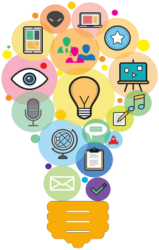

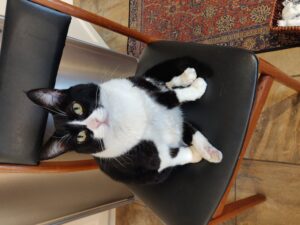


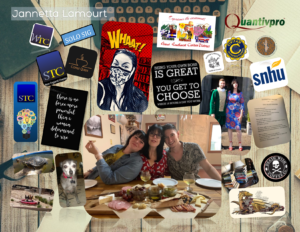
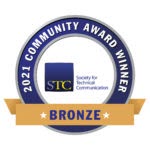 At the Summit Honors Reception, our IDL SIG received the Bronze-level Community Award AND the Most Improved Community Award. The Bronze citation reads:
At the Summit Honors Reception, our IDL SIG received the Bronze-level Community Award AND the Most Improved Community Award. The Bronze citation reads: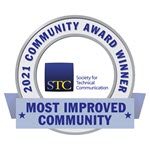 This is the Most Improved citation:
This is the Most Improved citation: